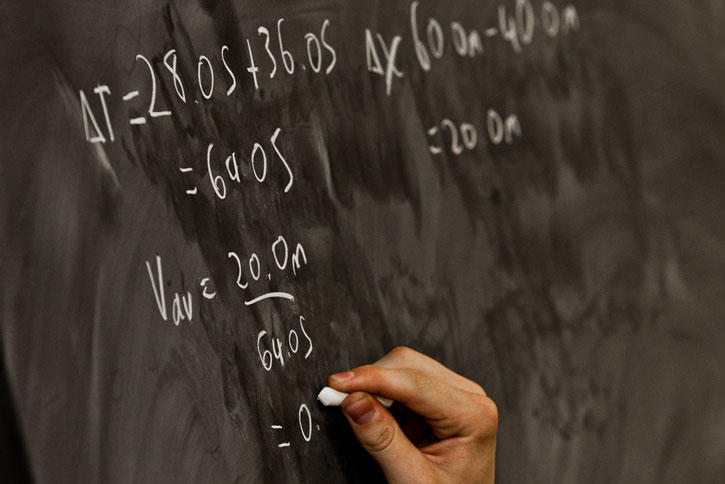It All Adds Up to a Great Career
If you’re still in high school and think Systems and industrial Engineering might be where you want to build a career, we have one four-letter word for you to keep in mind: M-A-T-H.

A strong math background will help you excel in engineering classes.
A strong math background will help you excel in engineering classes.
The more higher-level mathematics courses you can take, the better. If you have the opportunity, throw in a couple of computer science classes, too.
At the time of applying to Mason, you can choose to major in Systems and Industrial Engineering and directly apply to the program using https://www.gmu.edu/freshman/apply.
If your high school doesn’t offer a lot of math classes, or you can’t squeeze them in, don’t despair. If you applied as undecided or as an engineering major who is undecided on a specialty then once you’ve been accepted into Mason as an undergraduate, you can choose to major in Systems and Industrial Engineering from your first day here. During the first semester at Mason, you can directly apply to major in Systems and Industrial Engineering by filling a declaration of major form from the SEOR department by writing to seor@gmu.edu.
After the first semester at Mason, you can apply to major in Systems and Industrial Engineering if you meet certain criteria. You can come in as an engineering major who is undecided on a specialty. Your advisor can point you in the right direction to take the classes you need to declare Systems and Industrial Engineering as your pathway to a great career. Students must have
- successfully completed MATH 114, PHYS 160 and PHYS 161 (with a grade of at least C), and
- should have a minimum Mason GPA of 2.5 in all technical coursework.
"I chose to study Systems Engineering after I took an introductory engineering course. I realized then that what I enjoyed most about designing a product was seeing and predicting how different components would work together in order to form a working product."
